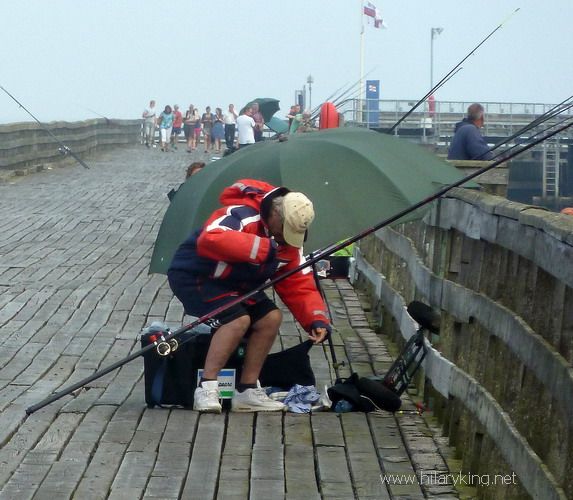Body Flexion – Used When Fishing
The term ‘Monkey Position‘ is used in the Alexander Technique to describe a way of bending forwards by flexing the body, bending the knees and folding at the hip joints so that the spine can continue to lengthen rather than curl and shorten. It’s a great way to bend forwards, whilst making sure we protect our backs.
Some people feel awkward using this ‘new’ movement but they don’t realize that they already use something like it during many of their activities – for instance as they flex their bodies in order to sit and stand, or bend over to put shoes on and off. In Western society where we use chairs so much of the time, many of us forget that we can use the big hinge of our hip joints to fold – and then wonder why they gradually stiffen up.
In AT lessons, we aim to make this flexing movement more refined and more conscious, so that we can avoid just curling forwards using tension and contraction, which puts strain on our spines – and squashes our internal organs!
I was going for a walk with friends and we went to Walton on the Naze where we watched a man fishing over the side of the pier. I just happened to photograph him as he went to arrange his fishing gear and he quite naturally bent his knees and flexed his hip joints, using a deep ‘Monkey’ like movement to bend forwards. I have no idea if he has ever had any AT lessons…
Learn by People Watching
I find it fascinating to observe people (in a friendly and non-invasive way) during their everyday activities. It can help us understand more about our own body-use and habits when we see how other people move and use their bodies. The fisherman looks completely comfortable using this flexing movement whilst keeping a lengthened spine and for people who find it strange to bend over in this ‘new’ way, it can help to see others using it in their everyday lives. Cricket, tennis and golf fans, plus anyone who has seen young children bend over, can see this type of movement being used over and over again!
So what do you notice and what can you learn about your own habits, when you watch people around you – do you sit and move around like the people you can see? If you keep your eyes open and discretely observe others when you are out and about, you will learn a lot about how we all use our bodies. You will see some easy and natural movements being made with poise and you will also see many awkward, unhelpful ways of moving and sitting. Can you get more of a sense of how your various habits of use and mis-use might impact on your own body?
Learning from others in this way also makes activities such as sitting in meetings or travelling on public transport, far more interesting! If we are attentive and think about how we move and what we are doing, we can learn so much about our own use when we see it mirrored in other people.
